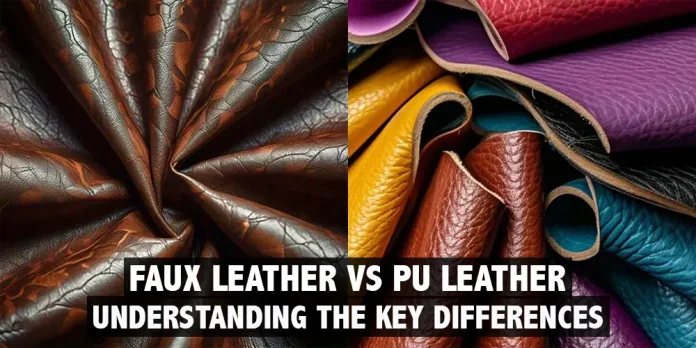Faux Leather vs PU Leather
Faux leather and PU leather are popular alternatives to real leather that provide stylish cruelty-free solutions without using animal skins, though there are key distinctions between them in terms of composition, durability, use, composition, and useability that could influence your decision for fashion or home decor applications. Here we discuss key distinctions between faux and PU leather so you can make informed choices to meet all of your fashion or decor needs.
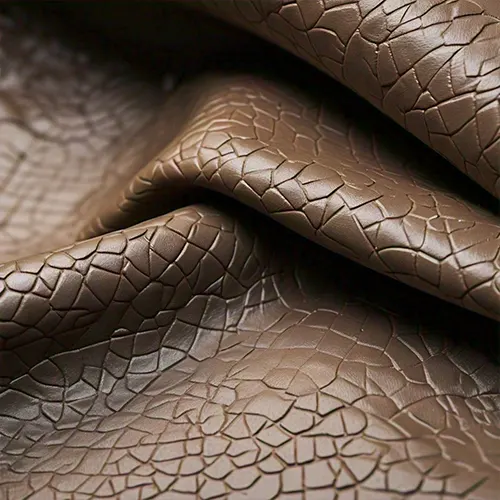
1. What is Faux Leather?
Faux leather refers to any synthetic leather alternative manufactured using non-animal sources and designed to replicate its appearance and feel. Faux leather can be created using various materials including:
- PVC (Polyvinyl Chloride): Leatherette material is often used to simulate its feel and appearance.
- PU (Polyurethane): Another synthetic material that mimics the soft and flexible properties of leather.
- Other Synthetic Blends: Some faux leather products use eco-friendly techniques when crafting them using synthetic fibers and materials for production.
Faux leather can be found in jackets, furniture pieces, shoes, and handbags – and is known for being affordable while remaining animal-friendly and available in an array of colors and textures.
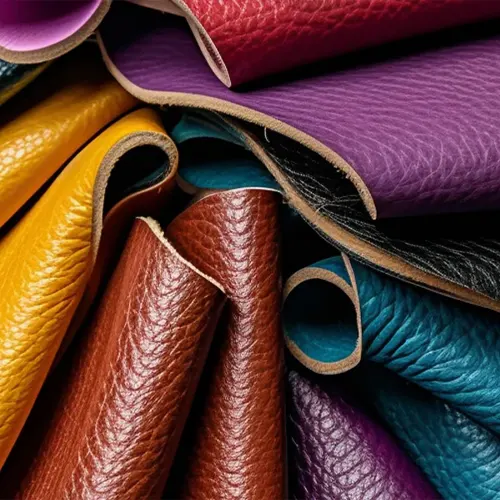
2. What is PU Leather?
Polyurethane leather (PU leather), also referred to as polyurethane faux leather, is an inexpensive form of faux leather made by coating polyester or cotton fabric with polyurethane for an authentic leather appearance without using animal products in its production. Due to its affordability and versatility, PU leather has quickly become one of the most widely used faux leather materials today.
Here’s how PU leather is typically produced:
- Base Material: A fabric base, often polyester, is used.
- Polyurethane Coating: A thin coating of polyurethane is applied over the base material to achieve a leather-like surface.
- Finishing: PU leather can be treated to produce desired textures, colors, and sheen levels.
PU leather has long been used in jackets, furniture upholstery, bags, and shoes – becoming one of the more easily identifiable forms of synthetic leather.
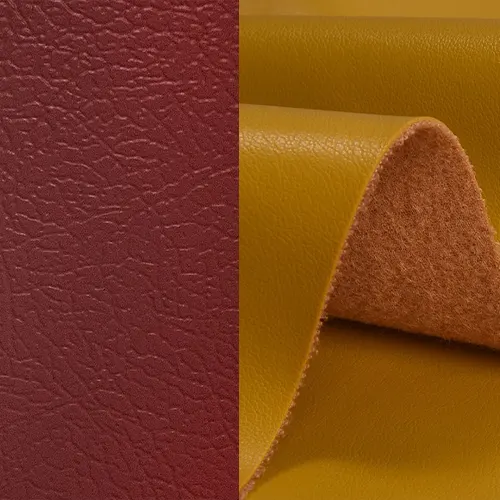
3. Key Differences Between Faux Leather and PU Leather
Though PU leather falls within the broad category of faux leather materials, there are key distinctions that set these materials apart:
1. Composition
- Faux Leather: Synthetic leather refers to any leather alternative made out of synthetic materials such as PVC, polyurethane, and other fibers.
- PU Leather: PU leather refers to faux leather made with polyurethane coating on fabric backing, this subset of faux leather.
2. Durability
- Faux Leather: The durability of faux leather depends on its construction material. High-grade faux leather made with multiple synthetic components may remain undamaged for several years without cracking or peeling, giving your purchase great long-term useability.
- PU Leather: PU leather is less long-wearing compared to other faux leather varieties; over time it may crack or peel when exposed to sunlight or moisture.
3. Environmental Impact
- Faux Leather: Faux leather production often hurts the environment due to the toxic chemicals used. More eco-friendly alternatives, including plant-based faux leathers, are now becoming available on the market.
- PU Leather: PU leather can be considered more eco-friendly than PVC-based faux leather as it contains fewer toxic chemicals; however, being made out of synthetic materials it will still contribute to environmental waste.
4. Appearance and Feel
- Faux Leather: Faux leather may closely resemble authentic leather in texture and softness; certain varieties even feature features that help them breathe easier than their leather counterparts.
- PU Leather: PU leather often boasts a glossy surface, making it more recognizable. Although its surface may feel smoother than high-grade faux leather, its natural feel may differ substantially.
5. Breathability
- Faux Leather: Some types of faux leather made with combined synthetic fibers may provide better breathability compared to PU leather.
- PU Leather: Due to the polyurethane coating, PU leather may not breathe as freely and thus makes wearing it in hotter environments or over long periods less comfortable.
6. Price
- Faux Leather: Prices can differ significantly based on material and brand; faux leather made with higher-end synthetic materials may cost more, yet provides greater durability and quality.
- PU Leather: PU leather is often one of the more economical leather alternatives, making it an appealing option for budget-minded consumers.
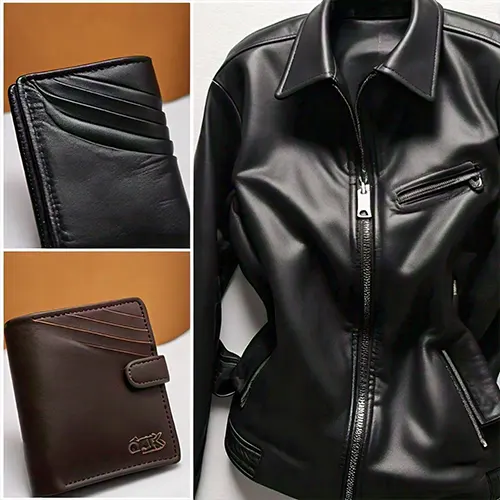
4. When to Choose Faux Leather vs PU Leather
Faux Leather:
- Faux leather offers versatility with various finishes and textures, perfect for creative uses without cruelty-related concerns.
- If durability is key to you, invest in high-grade faux leather made of synthetic materials.
- Faux leather offers breathability and flexibility if you want something breathable or flexible for clothing or upholstery purposes.
PU Leather:
- PU leather offers budget-minded consumers who appreciate its aesthetic without incurring an exorbitant cost tag an ideal solution.
- Ideal for accessories, shoes, and jackets that won’t experience heavy wear and tear over time, this material offers exceptional strength at low costs.
- Choose PU leather when selecting pieces that don’t need to last many years; its less resilient properties make it suitable.
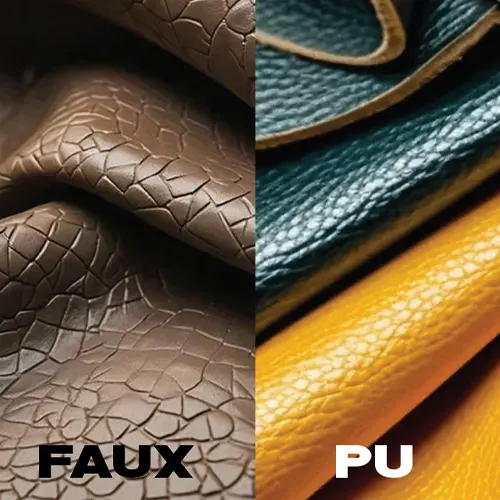
5. Pros and Cons of Faux Leather vs PU Leather
Faux Leather:
- Pros: They come in various textures and styles, are made of durable materials, and are animal-friendly, they provide multiple uses.
- Cons: Can have an increased environmental impact (if comprised of PVC-based) and could cost more than its PU counterpart.
PU Leather:
- Pros: These are affordable, cruelty-free, easy to maintain, and look similar to genuine leather in appearance.
- Cons: These materials tend to be less durable, more susceptible to cracking and peeling, less eco-friendly, and not as breathable.
Conclusion
Faux leather and PU leather offer cruelty-free alternatives to real leather in fashion and home decor applications, providing cruelty-free solutions. Although both materials belong to the faux leather family, there may be differences in terms of durability, texture, environmental impact, or budget when deciding between these options. Considering how best to meet your needs and preferences based on budget constraints or environmental impact considerations.
By understanding the difference between faux and PU leather products, you can ensure that your next purchase fits both your values and needs.
If you want to buy the best range of faux leather jackets, shop from the trusted brand Fauxjacket Today.


